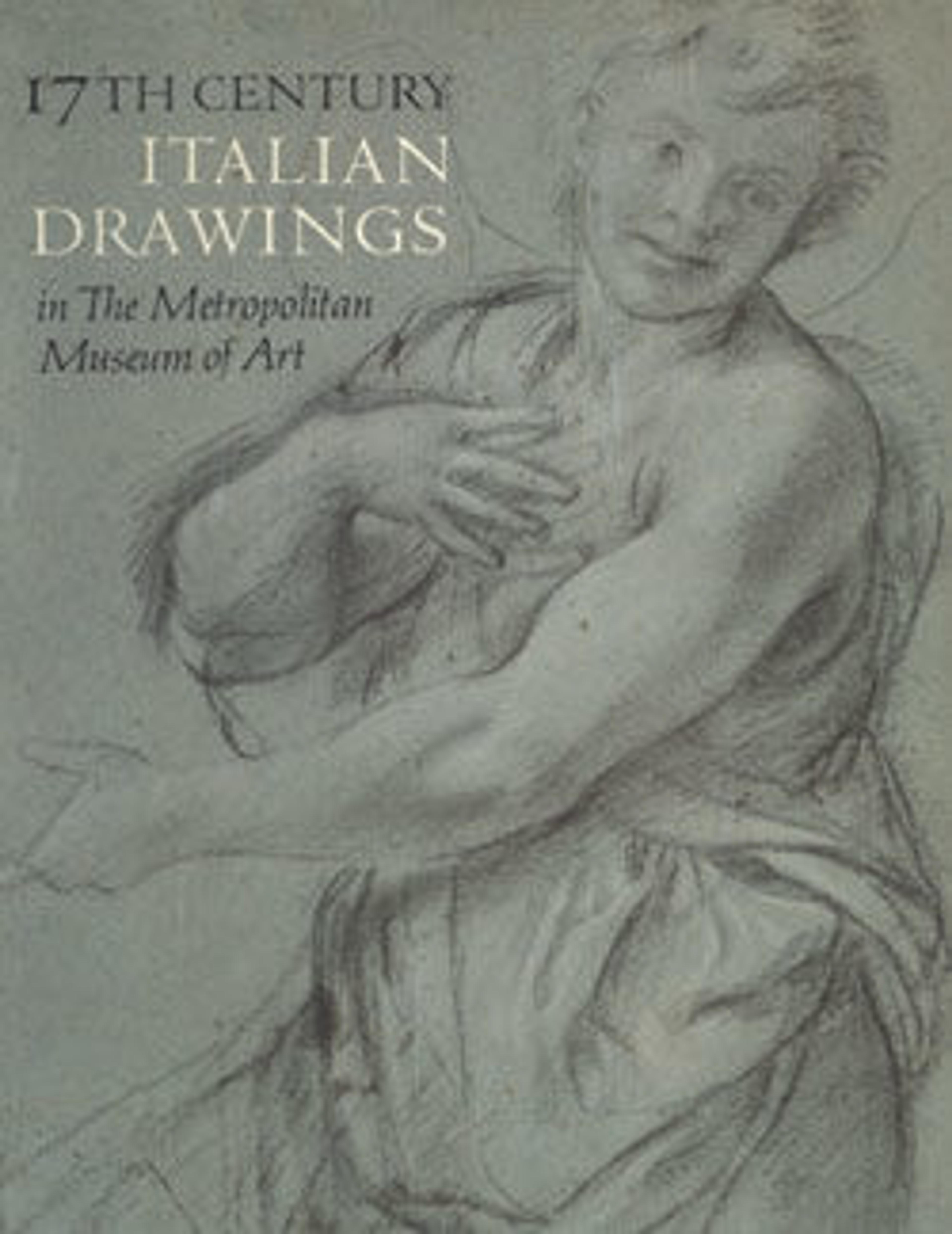Study for the Age of Bronze
A masterpiece of Italian Baroque painting, Pietro da Cortona's ‘Age of Bronze’ in the Camera della Stufa at Palazzo Pitti (Florence) represents a scene of Roman military triumph with elusive allegorical meanings. The present drawing was realized by Cortona to define the composition, dominated at the right by an enthroned general, who from a high pedestal distributes crowns to victorious legionaries. In the left foreground three enchained prisoners crouch dejectedly, while behind them a bearded figure explains the meaning of an annotated tablet to onlookers gathered before a circular temple that shelters a statue of Christ blessing.
In this drawing, a design for the whole composition, we still encounter the modest attitude of the central soldier and the captive guarded by a lictor in the right foreground, both motifs that disappear in the fresco, but the general is already enthroned, and the seated captives seen at the left in the fresco make their appearance for the first time. In the fresco Cortona made a number of changes in the grouping of the figures and in architectural details. Even more advanced composition drawings must have existed, but for the present this drawing brings us as close as we can come, in the sequence of drawings, to the finished work.
Six composition studies by Cortona for this fresco have been identified, five of them fairly recently. All of them, on stylistic grounds, seem to date from 1637, during Cortona's first campaign in the Camera della Stufa, and not from 1641, when the Age of Bronze was finally painted (see a further drawing in the Museum’s collection for the same project: inv. 1972.118.250). If we follow the artist's progress from first ideas to the nearly final solution, the sequence of the six drawings would seem to be: a pen sketch in an album of drawings by Cortona and Ciro Ferri on the New York art market a decade ago (repr. Campbell, 1977, fig. 13); a drawing in the Uffizi on the verso of a sketch of the partially completed Roman church of SS. Luca e Martina (repr. op. cit., fig. 14); drawings in Munich and Prague (repr. op. cit.. figs. 15 and 16, respectively); and two drawing in the Metropolitan Museum’s collection (inv. 64.48.2 and 1972.118.248). There are three conspicuous variations between drawing and fresco: in the latter the general is seated, not standing; the soldier at the center raises his arms to seize the offered crown instead of bending forward humbly; and the captive at the right foreground has been suppressed.
In this drawing, a design for the whole composition, we still encounter the modest attitude of the central soldier and the captive guarded by a lictor in the right foreground, both motifs that disappear in the fresco, but the general is already enthroned, and the seated captives seen at the left in the fresco make their appearance for the first time. In the fresco Cortona made a number of changes in the grouping of the figures and in architectural details. Even more advanced composition drawings must have existed, but for the present this drawing brings us as close as we can come, in the sequence of drawings, to the finished work.
Six composition studies by Cortona for this fresco have been identified, five of them fairly recently. All of them, on stylistic grounds, seem to date from 1637, during Cortona's first campaign in the Camera della Stufa, and not from 1641, when the Age of Bronze was finally painted (see a further drawing in the Museum’s collection for the same project: inv. 1972.118.250). If we follow the artist's progress from first ideas to the nearly final solution, the sequence of the six drawings would seem to be: a pen sketch in an album of drawings by Cortona and Ciro Ferri on the New York art market a decade ago (repr. Campbell, 1977, fig. 13); a drawing in the Uffizi on the verso of a sketch of the partially completed Roman church of SS. Luca e Martina (repr. op. cit., fig. 14); drawings in Munich and Prague (repr. op. cit.. figs. 15 and 16, respectively); and two drawing in the Metropolitan Museum’s collection (inv. 64.48.2 and 1972.118.248). There are three conspicuous variations between drawing and fresco: in the latter the general is seated, not standing; the soldier at the center raises his arms to seize the offered crown instead of bending forward humbly; and the captive at the right foreground has been suppressed.
Artwork Details
- Title:Study for the Age of Bronze
- Artist:Pietro da Cortona (Pietro Berrettini) (Italian, Cortona 1596–1669 Rome)
- Date:1637
- Medium:Pen and brown ink, brush and brown wash, over black chalk
- Dimensions:15-15/16 x 10-5/8 in. (40.5 x 27.0 cm)
- Classification:Drawings
- Credit Line:Bequest of Walter C. Baker, 1971
- Object Number:1972.118.248
- Curatorial Department: Drawings and Prints
More Artwork
Research Resources
The Met provides unparalleled resources for research and welcomes an international community of students and scholars. The Met's Open Access API is where creators and researchers can connect to the The Met collection. Open Access data and public domain images are available for unrestricted commercial and noncommercial use without permission or fee.
To request images under copyright and other restrictions, please use this Image Request form.
Feedback
We continue to research and examine historical and cultural context for objects in The Met collection. If you have comments or questions about this object record, please contact us using the form below. The Museum looks forward to receiving your comments.
